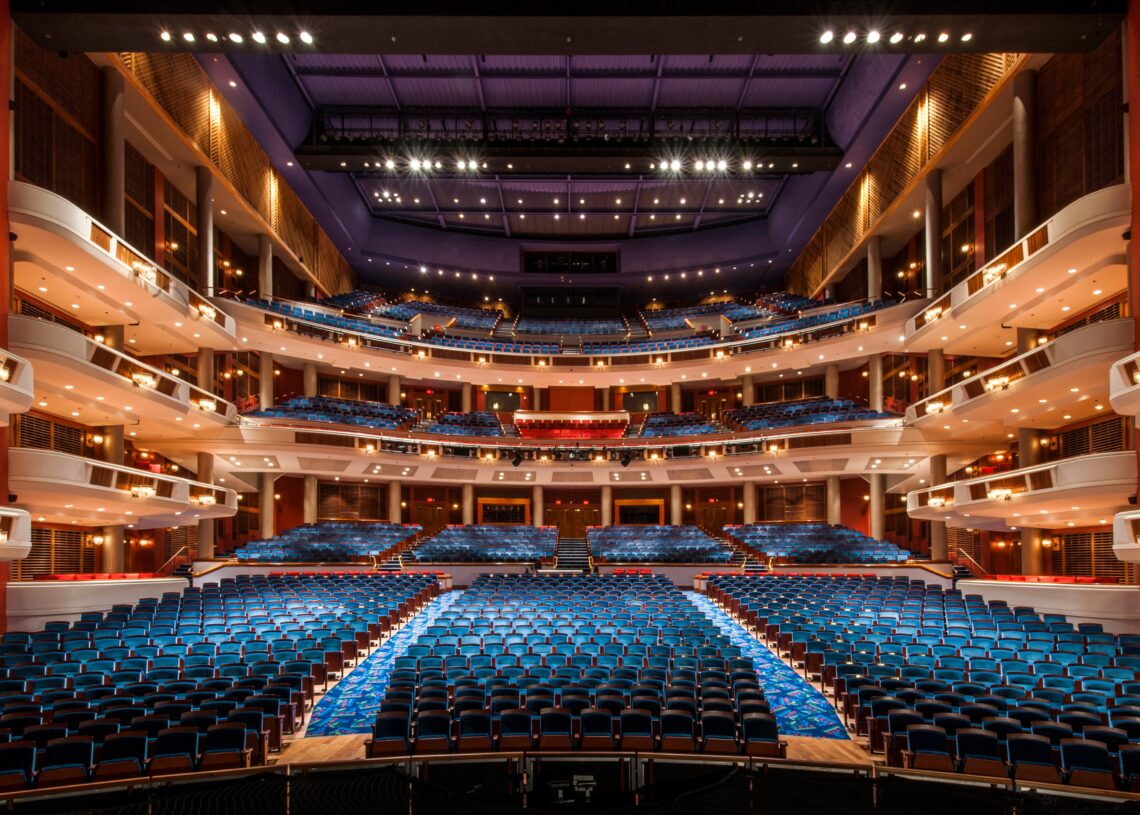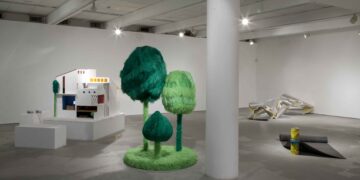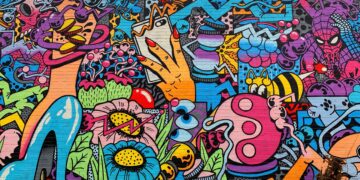Dancing Across Cultures: Celebrating the Diversity of Movement
Dance serves as a universal language, reflecting the rich cultural diversity of our world. Exploring different dance styles provides insights into the traditions, histories, and values of various societies, enriching our understanding and appreciation of human expression.
1. Embracing a World of Dance
Dance education is evolving to incorporate a broader spectrum of cultural influences. Institutions increasingly recognize the importance of exposing students to diverse dance forms, from classical ballet to hip-hop, Latin, and East Asian styles. This inclusive approach not only enhances technical skills but also encourages personal expression through movement. By studying a range of styles, dancers develop a more comprehensive understanding of the art form and its potential for communication.
The integration of diverse dance styles into curricula also promotes cultural awareness and appreciation among students. They learn about the origins and significance of different dance forms, fostering respect for other cultures and traditions. This exposure can broaden their perspectives and inspire them to create their own unique movement vocabularies.
Furthermore, the fusion of different dance styles can lead to innovative and exciting new forms of expression. Dancers may combine elements of classical ballet with hip-hop, for example, to create a contemporary style that reflects their own cultural identity and artistic vision. This cross-pollination of ideas can push the boundaries of dance and create new possibilities for performance.
2. Tradition Meets Innovation
The performing arts are witnessing a dynamic interplay between traditional forms and innovative interpretations. This fusion fuels creativity and allows performers to explore new avenues of self-expression. The result is a vibrant and evolving artistic landscape that mirrors the complexities of the modern world.
Contemporary artists are increasingly drawing inspiration from traditional forms, reinterpreting them in new and unexpected ways. This can involve incorporating traditional movements, music, or storytelling techniques into contemporary works, creating a dialogue between the past and the present. By engaging with tradition, artists can both honor their cultural heritage and push the boundaries of their art form.
3. Building Community Through Dance
Community-based dance projects are playing an increasingly important role in promoting cultural exchange and inclusivity. These initiatives provide opportunities for individuals from diverse backgrounds to come together and share their unique dance traditions. The growing representation of diverse choreographers further enriches the performing arts sector.
In addition to promoting cultural exchange, community-based dance projects can also address social issues and promote positive change. Dance can be used as a tool for healing, empowerment, and advocacy, providing a platform for marginalized communities to share their stories and raise awareness about important issues. These projects often involve collaborations with local organizations and community leaders, ensuring that the work is relevant and responsive to the needs of the community.
The Enchantment of Live Theater
The allure of theater lies in its unique ability to transport audiences to different worlds, evoke powerful emotions, and spark meaningful conversations. Let’s explore what makes theater productions so captivating and impactful.
1. The Economic Stage
The performing arts sector plays a vital role in the economic landscape. Arts and cultural industries contributed significantly to the economy, supporting millions of jobs. The live performance theater market maintained substantial revenues, with a positive outlook.
The economic impact of the performing arts extends beyond ticket sales and direct employment. Theaters and performance venues also generate revenue for local businesses, such as restaurants, hotels, and transportation services. They attract tourists and visitors, boosting the local economy and creating a vibrant cultural scene.
2. The Resurgence of Live Performance
Several factors contribute to the renewed interest in theater. Increased public interest in live and family-oriented productions is a primary driver. Innovation in creative processes and the integration of digital technologies also play a crucial role in attracting audiences.
The desire for shared experiences is a major factor driving the resurgence of live theater. In an increasingly digital world, people are seeking opportunities to connect with others in real life. Live theater provides a unique opportunity to share an emotional experience with a group of people, creating a sense of community and belonging.
3. Theater: A Cultural Hub
Beyond economic contributions, theater serves as a powerful engine for cultural exchange and creativity. The performing arts reflect and shape societal values, providing a platform for diverse voices and perspectives. This cultural vitality enriches communities and fosters a deeper understanding of the human experience.
Theater can provide a platform for marginalized communities to share their stories and perspectives. By staging plays that address social issues and challenge societal norms, theaters can promote dialogue and understanding. This can be particularly important in communities that are divided by race, class, or other factors.
The Harmony of Emotion: The Power of Music
Music performance transcends mere entertainment; it’s a powerful fusion of artistry and technical skill, deeply resonating with audiences. Exploring the dynamics of this vibrant sector reveals its enduring cultural and economic influence.
1. The Rhythm of Live Music
The live music scene continues to demonstrate considerable vitality. Recent data indicates a market size of $14.26 billion, and projections suggest a rise to $15.60 billion, signaling sustained expansion and highlighting the music’s central role in the performing arts.
The live music market encompasses a wide range of genres, from classical music to rock, pop, and hip-hop. It includes concerts, festivals, and other live performances that attract audiences of all ages and backgrounds. The growth of the live music market reflects the enduring appeal of live music and its ability to connect people through shared experiences.
2. The Driving Force
Audience enthusiasm, especially among younger demographics, fuels this growth. Their increasing participation in live events underscores evolving consumption patterns and a preference for immersive, direct experiences, highlighting the sector’s adaptability.
Younger audiences are particularly drawn to live music because it offers a unique opportunity to connect with their favorite artists and experience music in a communal setting. Live music events often feature interactive elements, such as meet-and-greets, Q&A sessions, and opportunities to share content on social media. This creates a more immersive and engaging experience for fans.
3. The Impact of Music
The performing arts sector significantly contributes to the economy, fostering job creation while enriching cultural landscapes. The following data reflects the sector’s dynamism.
| Year | US Live Music Market Size (USD Billion) | CAGR (%) 2025-2030 |
|---|---|---|
| 2024 | 14.26 | — |
| 2025 | 15.60 | 8.56 |
Data source: Mordor Intelligence “United States Live Music Market Size & Share Analysis” April 2025
Beyond Words: Acting and Choreography
Acting and choreography are two essential elements of performing arts. Both require immense dedication, skill, and creativity. Let’s delve into the nuances of each, highlighting their unique challenges and rewards.
1. The Actor’s Canvas
Acting is more than just memorizing lines; it’s about understanding and embodying a character. Actors must delve into the character’s motivations, emotions, and relationships to create a believable portrayal. This requires extensive research, emotional availability, and the ability to connect with the audience on a profound level.
Actors often spend months researching their characters, reading books, watching movies, and interviewing people who have similar experiences. They may also work with acting coaches to develop their skills and techniques. The goal is to create a character that is both believable and compelling, one that the audience can connect with on an emotional level.
2. The Language of Movement
Choreography is the art of creating and arranging dance movements. Choreographers use movement to tell stories, express emotions, and create visually stunning performances. They must possess a deep understanding of music, rhythm, and human anatomy to craft sequences that are both artistic and technically feasible.
Choreographers often work closely with dancers to develop their ideas. They may start with a general concept or theme and then experiment with different movements and formations to create a cohesive and meaningful work. The goal is to create a dance that is both visually appealing and emotionally resonant.
3. Gender and Dance
Recent research reveals gender disparities within choreography. While women’s dance works are gaining traction in premieres and mixed-bill programs, they remain underrepresented in full-length productions and leadership roles. A study of “Nutcracker and Holiday Productions” highlights the continued dominance of male choreographers, particularly in larger ballet companies, with only modest gains for female choreographers in smaller organizations.
The Stage: Where Creativity Meets Architecture
Stage design and performance venues are more than just backdrops; they are integral to the audience experience, shaping how stories are told and perceived. Let’s explore the dynamic world where creativity meets architecture, enhancing the impact of every performance.
1. The Return to Live
Recent data indicates a strong return to live, in-person performances. Interest in attending live shows and art exhibits is on the rise, suggesting a renewed appreciation for shared, real-time experiences. This resurgence highlights the importance of innovative and engaging performance spaces.
People are eager to reconnect with their communities and experience the arts in a communal setting. Live performances offer a unique opportunity to share an emotional experience with a group of people, creating a sense of community and belonging.
2. Active Engagement
Beyond simply attending events, many are actively engaging in creative pursuits. A notable percentage of adults report participating in creating, practicing, or performing artworks. This hands-on involvement enriches the cultural landscape and fosters a deeper connection with the performing arts.
The rise of DIY culture and the increasing accessibility of art-making tools and resources have contributed to this trend. People are increasingly interested in creating their own art, whether it’s painting, sculpting, writing, or performing. This hands-on involvement enriches the cultural landscape and fosters a deeper connection with the performing arts.
Q&A
Question 1: What are some key factors driving the resurgence of interest in live theatre productions?
Answer: The text points to several factors, including increased public interest in live and family-oriented productions, innovation in creative processes, and the integration of digital technologies as key drivers in attracting audiences back to the theatre.
Question 2: What gender disparity is highlighted in the context of choreography?
Answer: Research cited in the text reveals a gender imbalance in choreography, with women underrepresented in full-length productions and leadership roles despite gaining traction in premieres and mixed-bill programs. The dominance of male choreographers, particularly in larger ballet companies, is noted.
Question 3: What role do performance venues and stage design play in the overall experience of performing arts?
Answer: The text emphasizes that performance venues and stage design are crucial to the audience experience, shaping how stories are told and perceived. Innovative use of technology and thoughtful spatial arrangements significantly impact the emotional resonance and success of a production, enhancing audience engagement and immersion.







